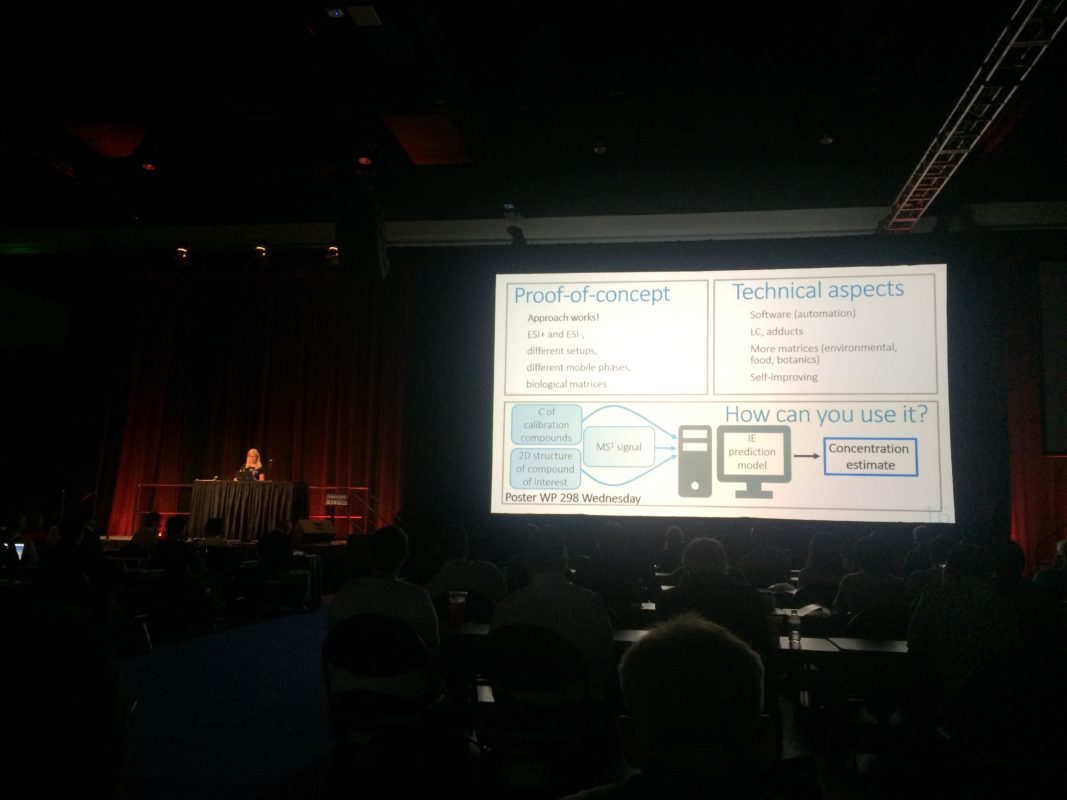Firstly, if you have clicked on our website you have probably noticed that we are on a completely new website! This is a result of hard work from our master’s student Mari and her loving husband Kaur! I am from the bottom of my heart grateful to them. You can see that we now have plenty of new features: for example, a short overview of all of our publications, projects, and teaching activities.
Additionally, last week members of our group, me, Piia and Jaanus, participated in the 66th Annual Conference of American Society for Mass Spectrometry (ASMS) in San Diego, CA. The conference was a huge success. There were altogether about 7500 scientists participating, ca 200 oral presentations and thousands of posters! We had two oral presentations and one poster presentation.
The conference was kicked off by a presentation by Lisa Shipley from Merck who gave a very informative talk about smart trials and moving to patient-centric clinical trials – most probably the future of clinical trials. It was very inspiring to see how a field that is considered to be relatively conservative is picking up the most modern technical solutions such as clever packages and home-based sample collection.
The first full day of the conference started with a presentation by our Ph.D. student Piia, who gave a talk about achieving more accurate semi-quantitative analysis by predicting electrospray ionization efficiencies. She first gave an overview of the research carried out so far and then, introduced her latest results. She showed that with the help of using ionization efficiencies concentration estimation in various biological matrices was improved by more than an order of magnitude.

Jaanus presented a poster on semiquantitative LC/ESI/MS via ionization efficiency prediction. He presented the simple and user-friendly approach of predicting ionization efficiencies using only 2D structures. We are now able to predict ionization efficiencies in both ESI positive and negative mode and in different solvent compositions without time-consuming DFT-COSMO calculations. Additionally, we have shown that using ionization efficiency predictions the validation with LC gradient elution resulted in 2.7-fold mispredicted concentrations compared to 44-fold mispredictions using directly peak areas. We were happy to see that numerous groups were interested in our studies and fruitful discussions about the results did not stop until the end of the poster session.
I also presented some of the latest results obtained in FU Berlin. I talked about using mass spectrometry and ion mobility spectrometry for investigating interlocked nature of catenanes and knots. We hope to soon share these results with everyone!
Some of the most interesting developments in the field that also link with our research interests were data science tools on non-target analysis and general data treatment. Also, exposomics seems to pick up the base; though there is still a lot to do in absolutely all fields from developing new sample collection and preparation methods data analysis. For example, Kristine A. Favela showed a beautiful example of the chemical information stored in children’s teeth about their exposure to various chemicals.
In conclusion, this year’s ASMS was very successful for our group. We saw a lot of interest in our work, met our collaborators and got some new friends and possible future collaborators. We are already looking forward to the next ASMS in Atlanta. I thank Piia and Jaanus for their fabulous work and active promoting of our research in ASMS. We are also grateful for our financial supporters, who made this conference possible to us: Ministry of Education and Research of Estonia by smart specialization doctoral stipend, Graduate School of Functional Materials and Technologies, and Alexander von Humboldt Foundation.


